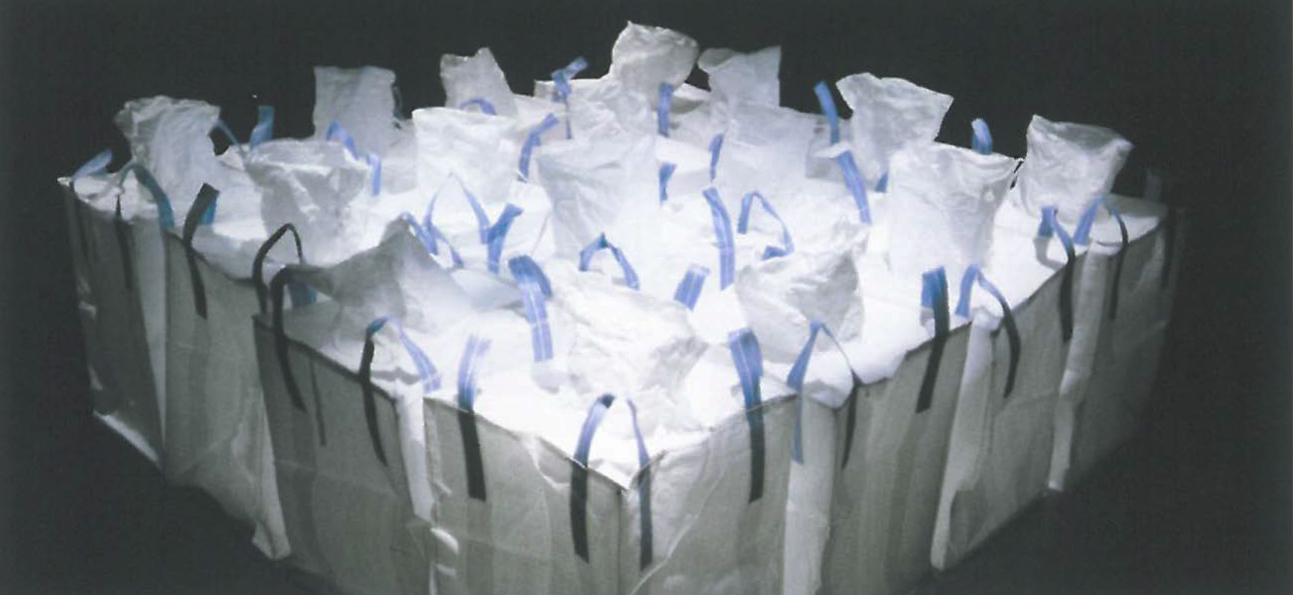
Somewhere Outside Tokyo invented time
Someone in a factory invented time
If people wanted proof to carry on
They'd like to buy one
- The Stranglers 'Outside Tokyo' 1978
Outside Tokyo, curated by John Curtin Gallery's Manager, Suellyn Luckett, and named after The Stranglers' sound track, explores ideas about space and time through varying permutations in installations by eight Australian artists. Most of these artists studied at Curtin University and their work comes largely from the Gallery's Collection.
This exhibition is an interesting illustration of what the tension of space/time could bring to the understanding of the installation as an art practice. By re-installing their work within a new context, the artists have considered space and time as thematic and aesthetic materials fluctuating from literalism to displacements, revealing an overview of hybrid constructions.
Let's amble outside Tokyo and enter into the hybridity. Some works feature the conventional ideology of mass consumption or the more recent phenomenon of popular Internet culture, with an eloquent take on the topic.
The meticulously conceptualized installation, Still life with taps, by renowned artist Carol Rudyard, is one of the oldest acquisitions of the Curtin Collection (1981). Through the choice of objects - golden taps in a porcelain basin, delicate perfume bottles, fern plants - Rudyard reconstitutes a sophisticated bathroom combined with projected images of the same objects and sounds, with references to advertisements and Proust, expressing a disconnected reality. Her complex and refined work is an ironical va et vient between reality and illusion, luxury and banality.
Paul Capron uses neon light to create a special effect of introspection into the world of consumption. Bed bound, Cleanse, Ice Box and Picture Cell, is a narrative of consumption at home using objects encircled by neon to symbolise our entrapment. A lounge chair invites the viewer to sit and contemplate a TV and a fridge covered by neon bars. Nearby is a bed and a basin, all bounded by neon bars to portray the idea of control related to madness and institutions.

Matthew Hunt's Core(Hard)/Porn Wall is a compelling interpretation of the popular culture of Internet porn. He considers porn websites through the dominant colour of the background used by each site and transfers this as a colour chart onto painted curtain rods. In this way he postulates a new relation between private and public space, between real and virtual.
The three following artists have scrupulously investigated intangible space and imperceptible time in intriguing works that hint at a conspiracy. In Ambientspace, Paul Thomas uses the latest technology to reveal a new relation to space and identity. He uses an endoscope to explore the micro spaces between buildings and between his skin and his clothing to re-figure our perception of the residual spaces in society through the new technologies. The observation of 'the inside' is an old story. Thomas goes further, exploring with acuity the 'in between.
Tom Müller's installation, In the Beginning, captures the passage of time. Using a beeswax surface that alternatively becomes liquid or crystallised (in response to the switching on and off of a heater) to construct a moving and aromatic landscape, Müller studies the long process of the metamorphosis occurring in the natural world. In Random Samples, Anthony Kelly parodies a database and surveillance system using information collected over a period of time from householders selected at random.
In their installations, Kate McMillan and Annabel Dixon appear to have a less labyrinthine approach, as they tend to employ imagery to represent a known context, or the simple exhibition of existing objects. Both artists invade the space with immodesty, using very direct and free language to deliver an impressive visual, more effective than intricate, using mundane and raw materials to generate imagery that represents 'non descriptive' art. In Prepared 2001 McMillan exhibits recycled cardboard pallets, once used to transport heavy goods and now invading the space of a large wall as a magic sculptural installation. In the Beginning is the end, also by McMillan, is a series of plastic bags once used to store wool and grain, and without changing their initial form, realises the emptiness of the space.
Annabel Dixon exhibits, with minor intervention, a series of banal items and materials - samples of wooden panels, newsprint, and inked papers - accumulated randomly then ordered in an innovative spatial geometry with an effective rhythmic repetition.
Outside Tokyo expresses interesting individual frames of reference, but there is no extravaganza eroding the boundaries in the symbolic constructions, rather silent and serious metaphorical representations creating occasionally a disrupted environment. This exhibition still remains an honorable response to the complexity and ambiguity of the recurring theme of space and time in the art installation practice.












